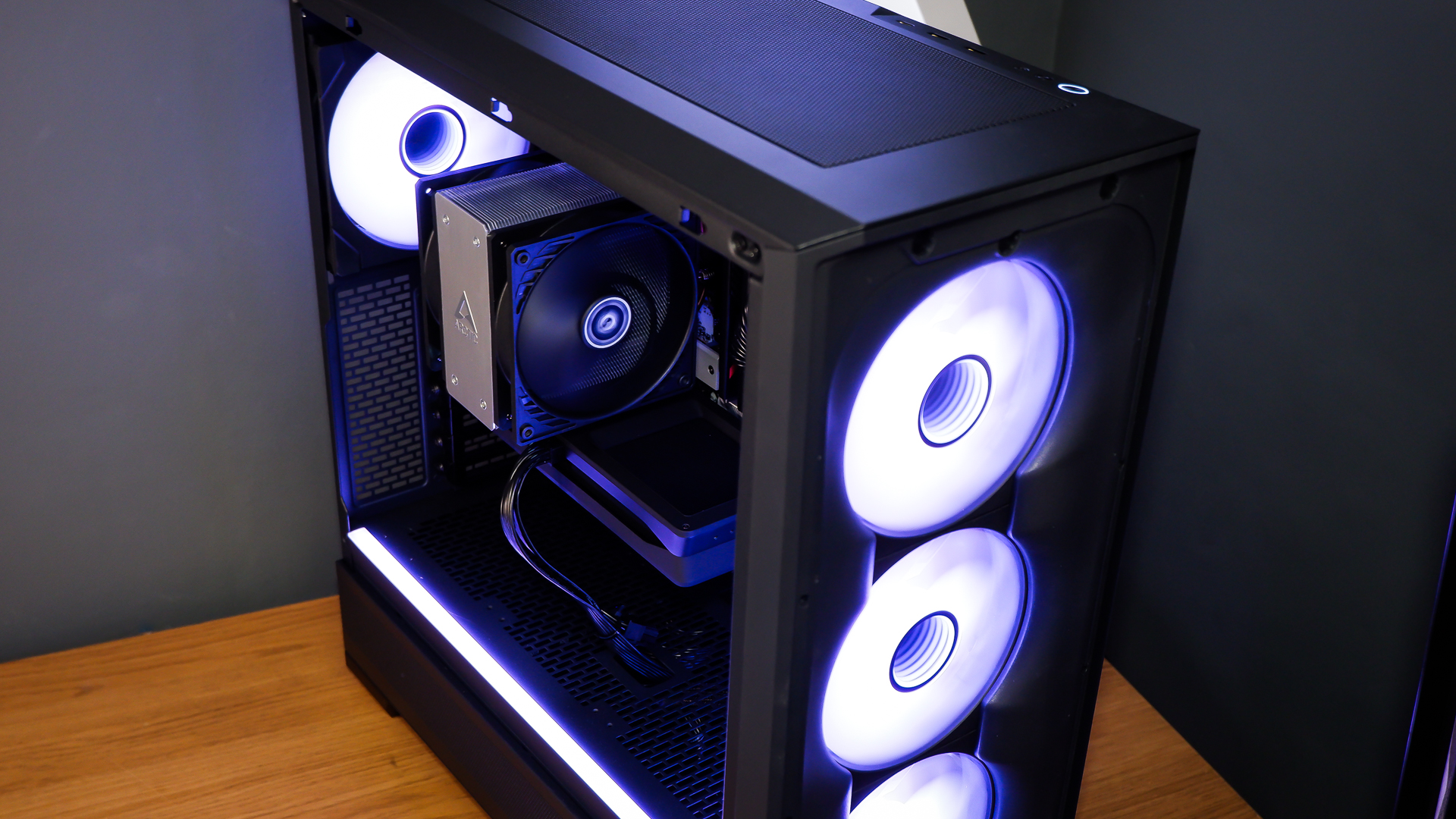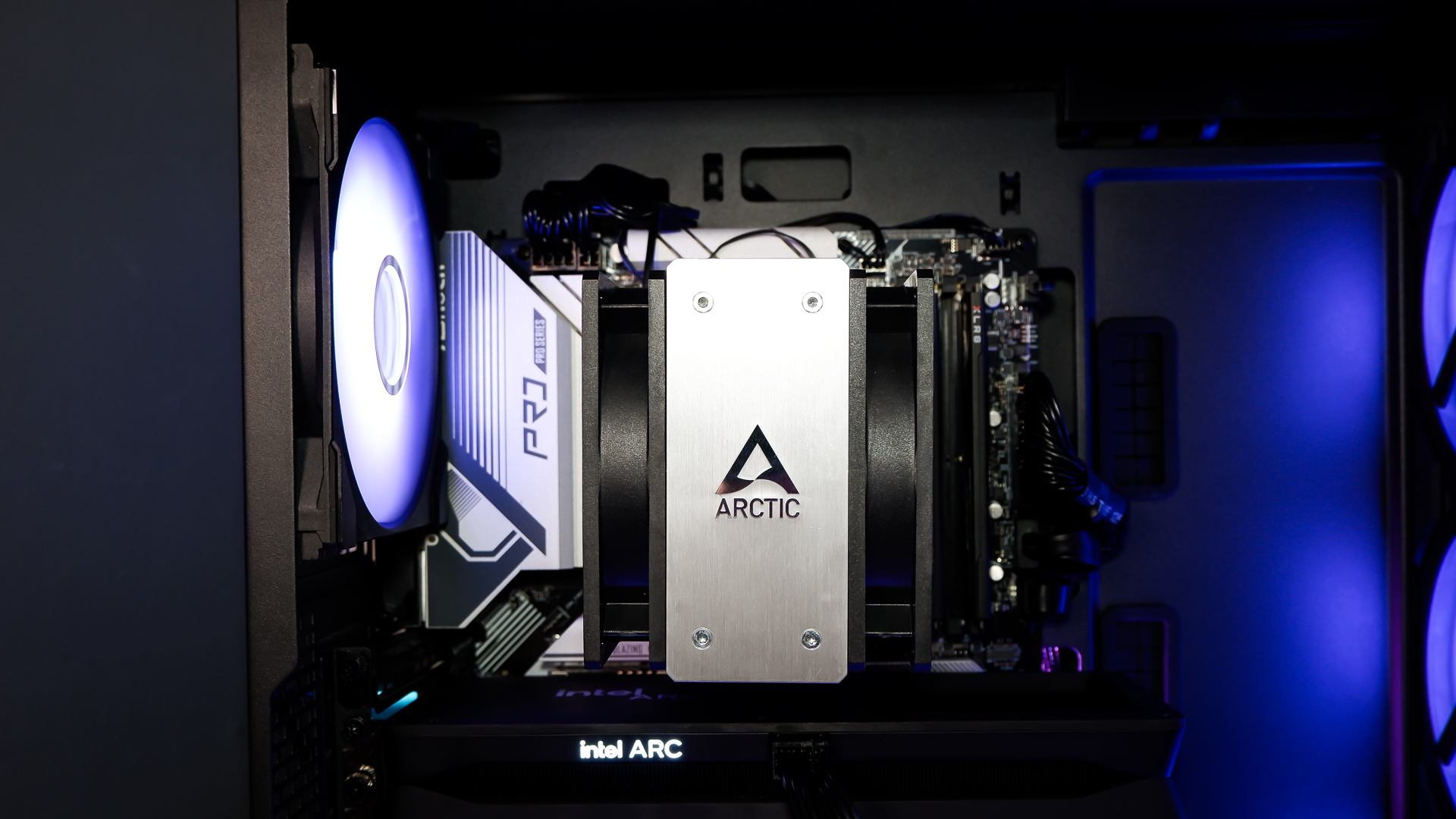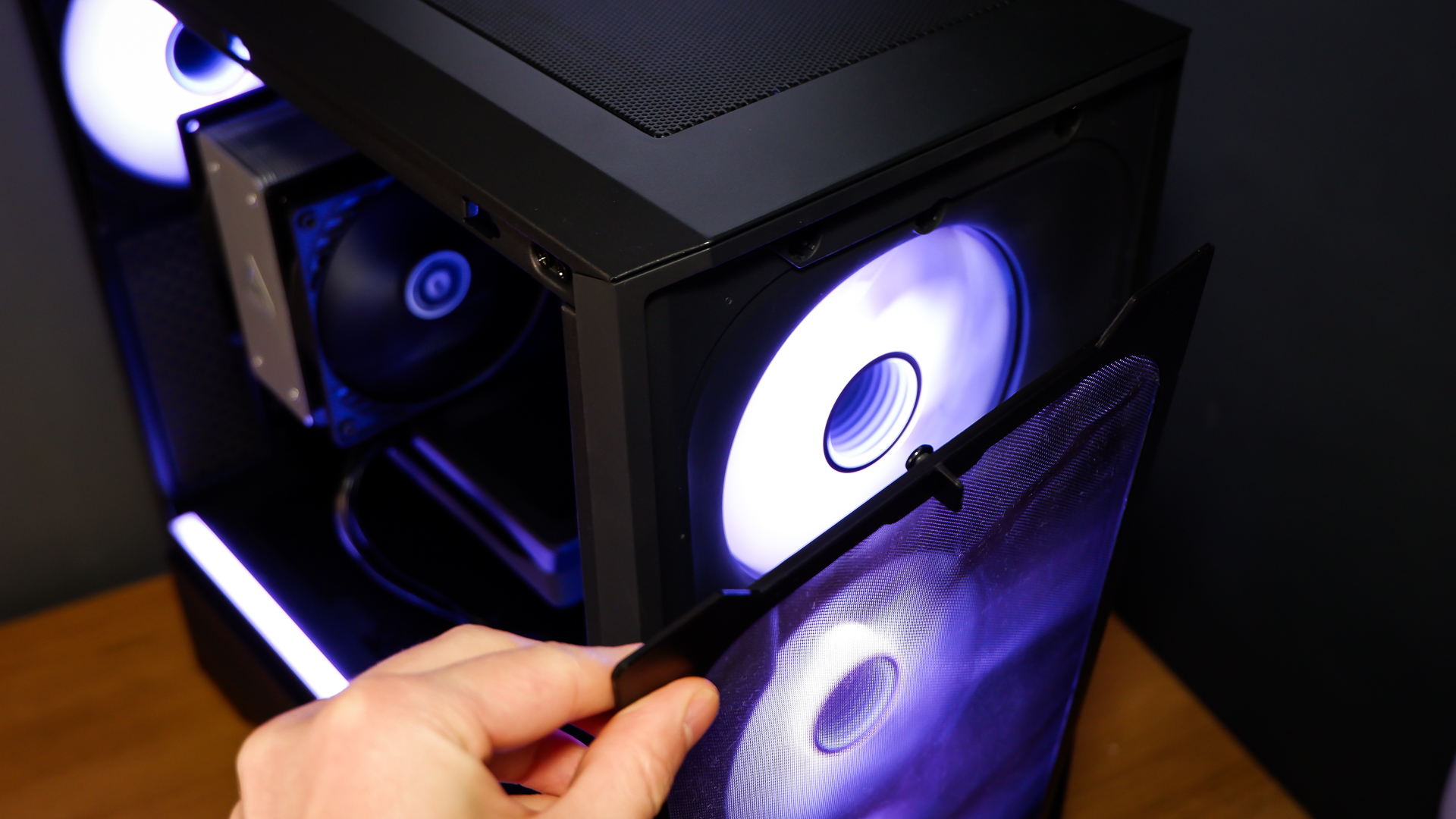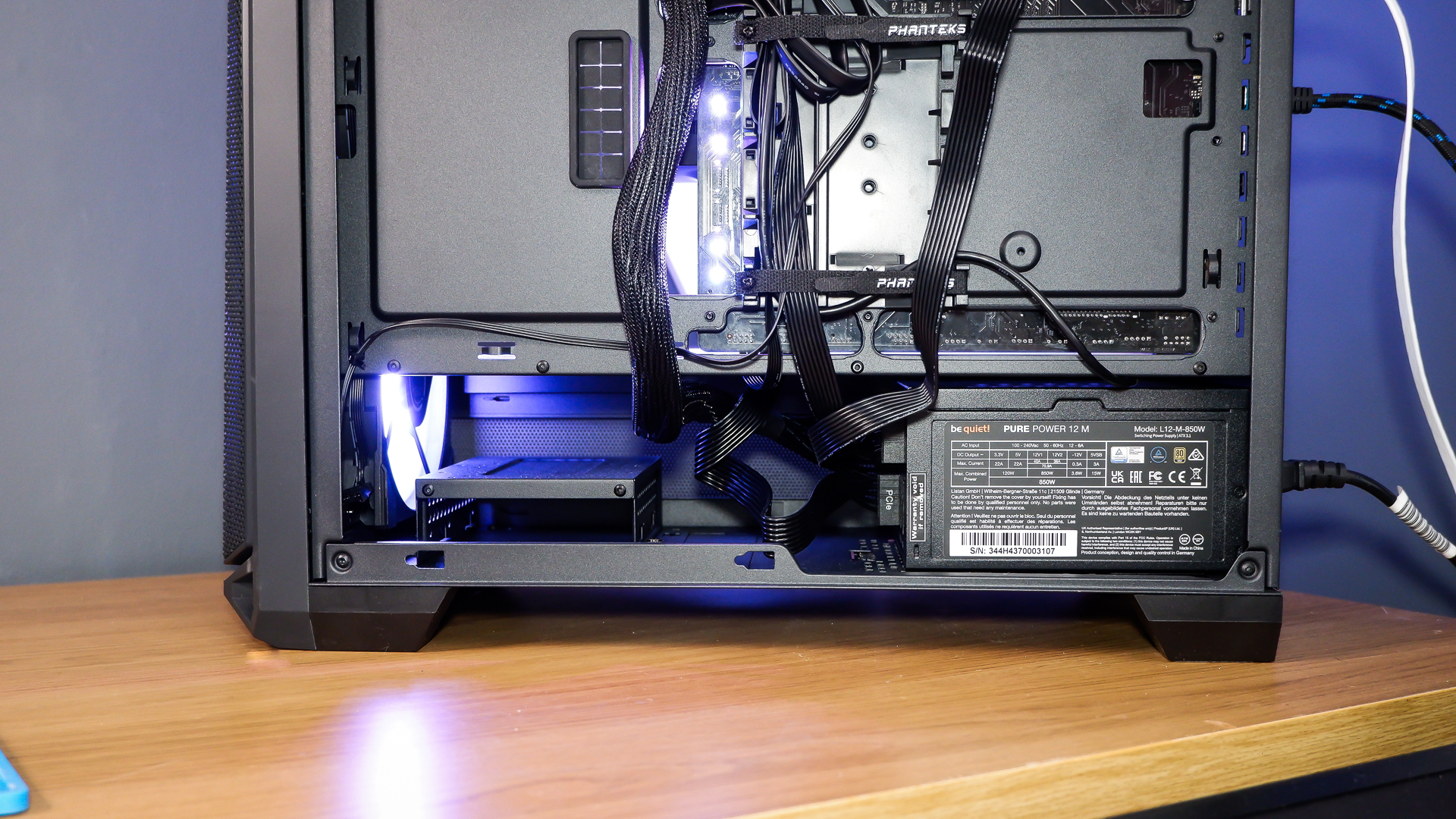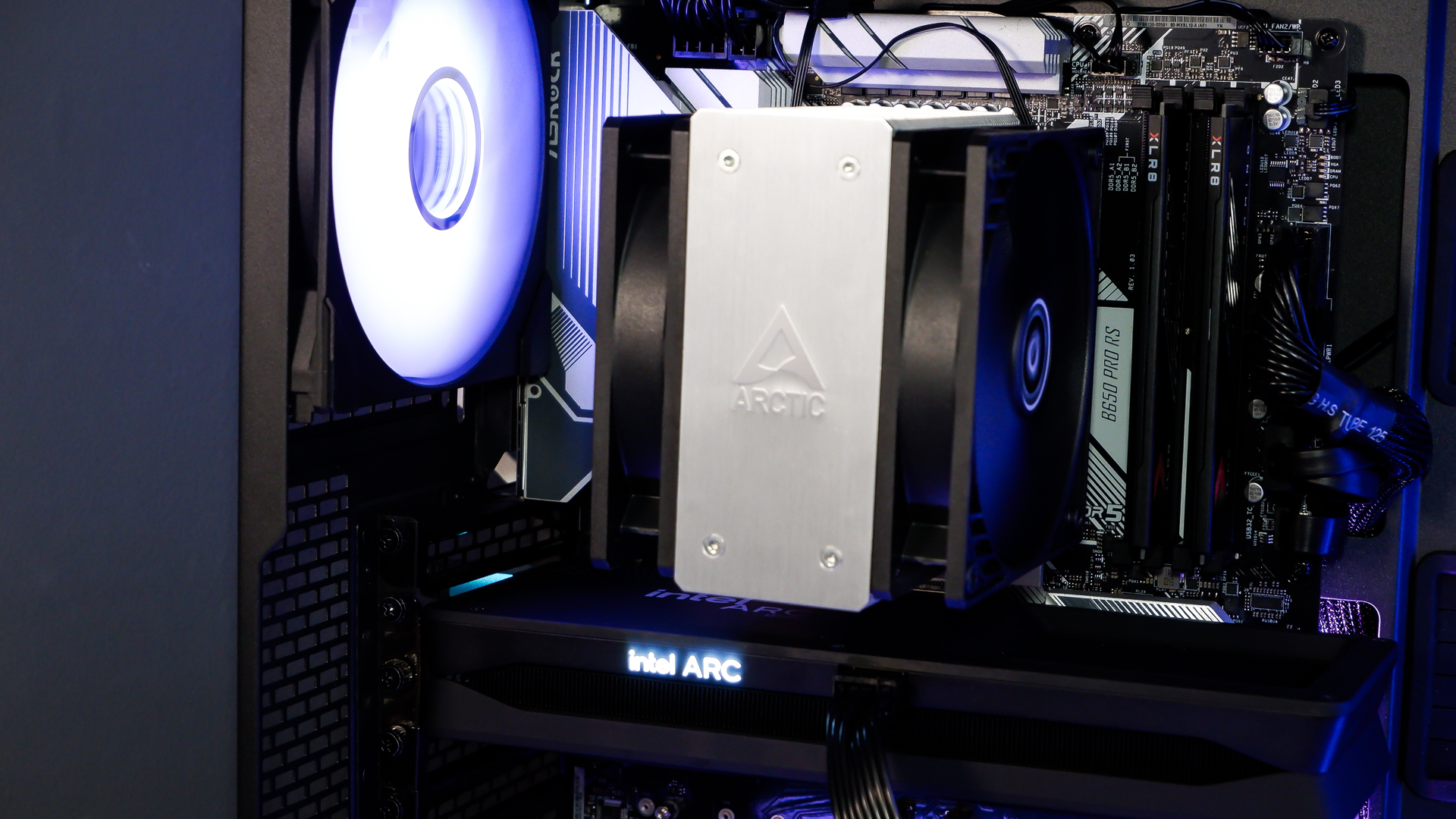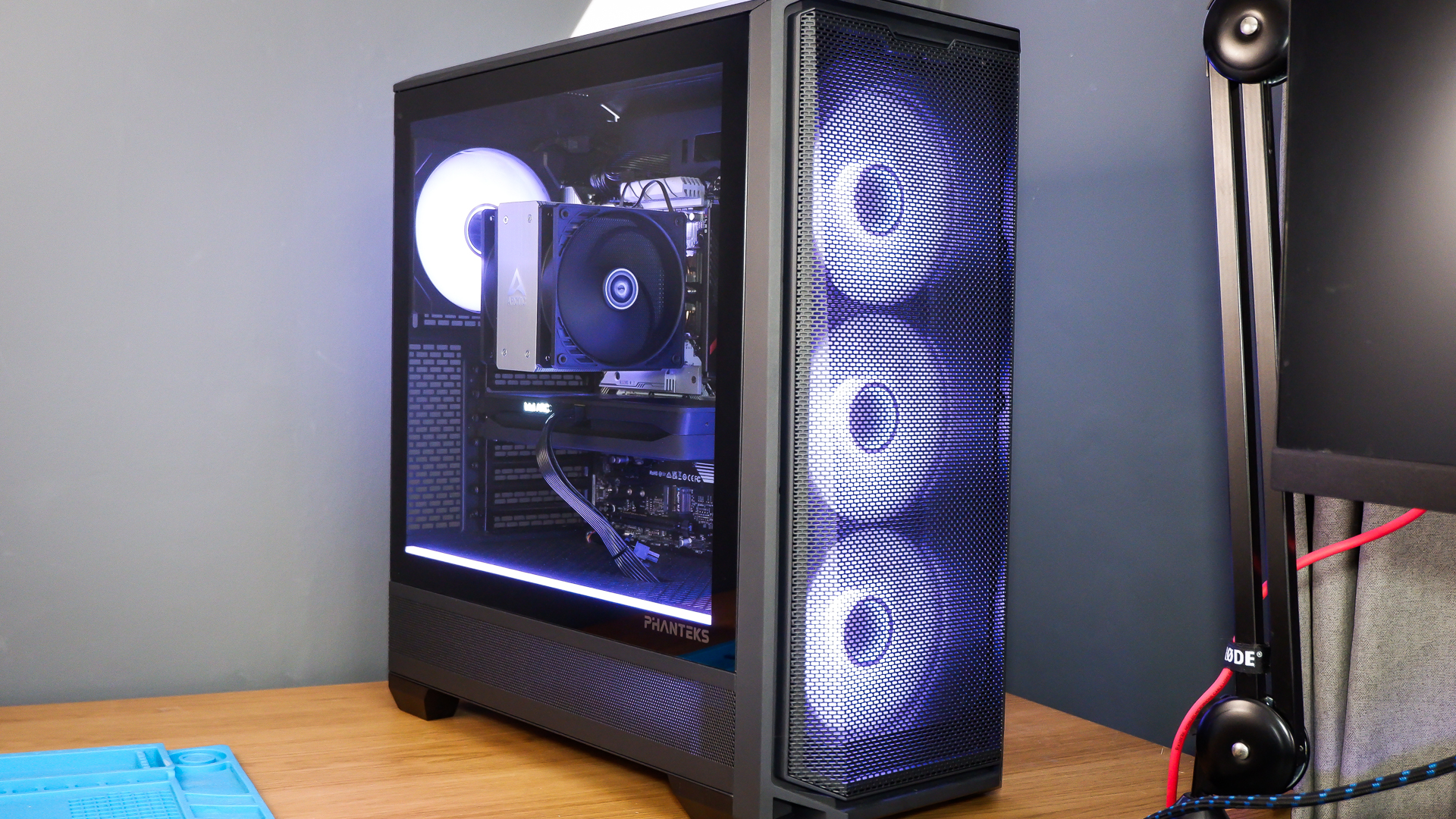
A budget part is only as good as its price on the shelf.
There have been some excellent budget PC parts released over the past couple of years. I’m not just talking about budget graphics cards, though we do finally have one of those, I’m also talking about superb coolers, cases, memory, and solid state drives. The world is your discounted oyster, and if you play your cards right, you can build a mean machine on a shoestring budget.
Though PC parts—the good ones, anyway—can be quite hard to come by. They sell out quickly, due to popularity, and stay that way for a while. You can hardly blame PC gamers for wanting the best for their rigs. As is often the case, when they do return to store shelves, they’re overpriced. A prime example of this is how Nvidia, AMD, and Intel graphics cards have often been available only in excess of MSRP, as are AMD’s top Ryzen 9000-series X3D chips.
I’ve run headfirst into the problem of availability with my latest PC build. I’ve put together a PC that’s nearly a budget dream, save a few overpriced or tough-to-find parts. With a focus on affordable components, you’d think there would be an abundance of parts to choose from. However, my build has been bogged down waiting for parts to be available and ended up with me spending a little more than I’d like.
Parts
Total: $1,181 | £1,024
The prime offender is Intel’s Arc B580. This budget graphics card comes with an MSRP of $250, though the lack of competition from AMD or Nvidia in the entry-level space means it’s become a prized possession for some. In the US, it’s largely available to purchase, though at $100 or more than MSRP. That doesn’t feel great, especially for a card that, while impressive for the money, we had some driver issues with.
B580 pricing isn’t as much of an issue in the UK, where I’m based. You can buy an Arc B580 for £270. Though I did end up with another slight hiccup based on my locality—or perhaps you could chalk it up to bad timing on my part.
I struggled to source the air cooler I wanted for this build here in the UK. The Arctic Freezer 36 is a popular dual-fan model that delivers the performance of a larger unit for less cash. I couldn’t find any stock of the black version anywhere close to MSRP. The standard silver version was also not widely available, but after a week of searching, I found one. I ended up buying one from a retailer I hadn’t used before called PC Boost for £23 and it showed up pretty quickly and works great, but if I could’ve left it any longer, it looks like the black version is now more widely available and no longer on backorder with major retailers.
I’ll chalk that one up to bad timing, as Chinese New Year was around the same time I was picking parts for this build and I’ve been told by a few manufacturers that this will have an impact on some product shipments and availability as Chinese-speaking people across the globe take some well-deserved time off.
I’m not just saying this because I have to, but I really like the silver finish on the Freezer 36. It goes great with my choice of motherboard, the ASRock B650 Pro RS.
Initially I had hoped to use one of the more recently released B850 motherboards for this build. The promise of actually affordable AM5 motherboards built specifically for the 9000-series appealed to me, though it was to be a short-lived love affair. I ran into two issues that prevented me from using an 800-series mobo: 1) Chinese New Year caused a delay with the manufacturer I had hoped to source one from, 2) these motherboards are brand new and therefore have less competitive pricing than their predecessors in the 600-series lineup.
Considering the 800-series and 600-series chipsets are quite similar and both fully compatible with my choice of processor—the Ryzen 5 9600X—choosing an older motherboard seems like a good way to save a little cash.
You can easily spend a small fortune on a motherboard these days but a $130 motherboard has most of what I require here: 3x M.2 SSD slots, 7x USB Type-A ports, 1x USB Type-C port, and a way to flash the BIOS without a chip. That last one is important as the motherboard I received needed updating in order to use a 9000-series processor with it. This is a great ass-saving feature and actually something missing from the otherwise preferable Pro RS WiFi model available for $10 more. If you can guarantee you don’t need to flash the BIOS, or you have a 7000-series chip you can use to boot the board and flash instead, that’s preferably here. Otherwise, the Pro RS has no built-in Wi-Fi, but does come with a spare Wi-Fi card slot on the board to add one in at a later date. I would recommend doing just that.
Despite my issues with sourcing a sensibly priced cooler, GPU, and motherboard, I did manage to round up some great picks for this build. The star of the show has to be the Phanteks G400A.
The Phanteks G400A is the latest budget (ish) PC case from a company renowned for its affordable chassis. I say budget-ish because at $110, it’s far from the cheapest around. That said, it is a good deal once you factor in the great build quality and the four 140 mm fans it includes. These fans and the case even offer some basic RGB pizzazz if that matters to you.
I’ve mentioned the cooler already though it really is a great pick. Even if you have to settle for silver like I did. In testing, the 9600X only reached a maximum temperature of 62°C while gaming and 72°C under more intensive load in system benchmarks, such as Cinebench 2024. Actually, with that, let’s move on to what these sorts of parts get you by way of performance. But just before we do that I haven’t spoken about the elephant(s) in the room: my choice of PSU and SSD.
Yes, this Be Quiet! Pure Power 12 M 850 W is a little overkill at 850 W for this build—the B580 only requires 600 W and that AMD chip isn’t pulling much power—but I couldn’t source an alternative in time. I’ll just use the age-old excuse rolled out by PC gamers everywhere when they overspend on a component and try to make themselves feel better: it’s ‘future-proofing’.
I also grabbed an SSD out of my drawer that I wasn’t using. The Crucial P5 Plus is a solid drive, though it’s been replaced by the T500 now. A brand new SSD that’s worth looking at right now is the Crucial P310 in full 2280 format. That’s $65. You can read our Crucial P310 2230 review if you want more info, though that is the smaller version mostly for use in handhelds.
Performance
If you’ve followed along with the Arc B580 launch, you’ll know it’s a pretty mean card for price-performance ratio (providing you can find it at MSRP or close to). In fact, in my testing versus a PC powered by an RTX 4060 Ti and one powered by an RTX 4060, it came out on top of the lot in a couple of gaming benchmarks, and it beat the RTX 4060 in all but one run (Black Myth with upscaling enabled). Considering Nvidia’s RTX 4060 is still the budget card to beat for the green team, and often costs upwards of $400 right now as we await the RTX 5060, it does look to be roundly beat by Intel’s number.
On the CPU front, this AMD chip does appear to hold back Intel’s GPU in Baldur’s Gate 3, which favours a zippier processor for our custom benchmark run in the city streets. Similarly, it was defeated by the Core i5 14400F by a hair in 3DMark Time Spy Extreme, though AMD’s newer Ryzen chip managed to claw back victory in Blender 4.2.0 and Cinebench R24. At this price range, I’m mostly interested in those gaming frame rates, however, and in that regard it gets the job done nicely.
This is the sort of affordable PC build that I’d like to see more of in 2025. A clean-cut case with ample cooling from some genuinely stellar parts. So long as you can actually buy the darned things.
I have little doubt that a little more competition would help us out with pricing and availability here—Intel’s B580 stock gets hammered and prices increase because it’s the only GPU in town offering this sort of price/performance. The Freezer 36 does have some competition but it’s in demand because it’s offering something few others can. The 800-series motherboards would be cheaper, given a little time for manufacturers and retailers to sniff the opportunity to undercut their competitors. You can say the same for higher-end parts, such as AMD’s Ryzen 7 9800X3D, which has no real competition from Intel, and its RX 9070 XT, which has mostly the RTX 5070 Ti for company, which is not a competitively priced card.
These prices will change, and I do hope the negative side of building a gaming PC largely in the spring of 2025 doesn’t carry over to building a PC towards the tail-end of the year, when prices should be lower and stock more bountiful. We can only hope.
